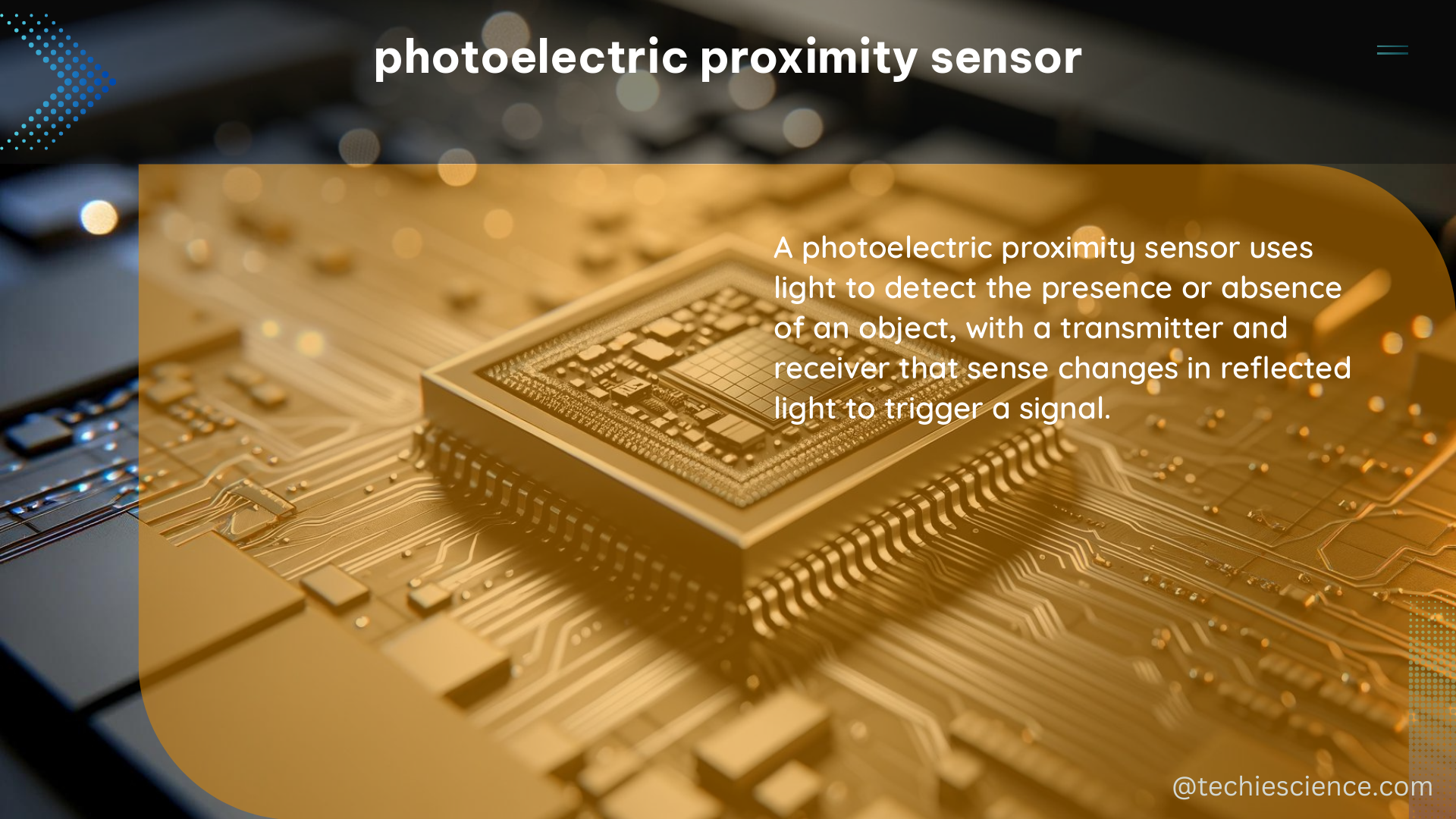Photoelectric proximity sensors are advanced electronic devices that use light to detect the presence or absence of objects without physical contact. These sensors operate on the principle of the photoelectric effect, where light is shone onto a photocathode, causing the emission of electrons. These electrons are then amplified and converted into an electrical signal, which is used to determine the presence or absence of an object.
Types of Photoelectric Proximity Sensors
There are three main types of photoelectric proximity sensors:
- Through-Beam Sensors: These sensors use a separate emitter and receiver, with the receiver detecting the light emitted by the emitter when it is interrupted by an object.
- Retroreflective Sensors: These sensors use a reflector to bounce the light back to the receiver, allowing the sensor to detect the presence of an object.
- Diffuse Sensors: These sensors emit light onto the object and detect the reflection, allowing them to sense the presence of an object without the need for a reflector.
Technical Specifications of Photoelectric Proximity Sensors

The technical specifications of a photoelectric proximity sensor can vary depending on the manufacturer and model. However, some common specifications include:
| Specification | Description |
|---|---|
| Operating Distance | The maximum distance at which the sensor can reliably detect an object. This can range from a few millimeters to several meters, depending on the sensor type and model. |
| Response Time | The time it takes for the sensor to detect an object and output a signal. This can range from microseconds to milliseconds, depending on the sensor’s design and electronics. |
| Light Source | The type of light emitted by the sensor, such as infrared or visible light. Infrared light is commonly used as it is less affected by ambient light conditions. |
| Output Signal | The type of electrical signal output by the sensor, such as NPN or PNP. This determines the type of input circuit the sensor can be connected to. |
| Housing Material | The material used to house the sensor, such as plastic or metal. The housing material can affect the sensor’s durability and resistance to environmental factors. |
| Operating Temperature Range | The temperature range in which the sensor can operate without affecting its performance. This can range from -40°C to 70°C or more, depending on the sensor’s design. |
| Supply Voltage | The voltage required to power the sensor, typically ranging from 12 to 24 VDC. |
In addition to these specifications, it is also important to consider the sensor’s sensitivity and accuracy. Sensitivity refers to the sensor’s ability to detect weak signals, while accuracy refers to the sensor’s ability to accurately measure the distance to an object. These factors can be affected by factors such as ambient light, the size and reflectivity of the object, and the sensor’s angle of incidence.
Designing a Photoelectric Proximity Sensor DIY Project
When designing a photoelectric proximity sensor DIY project, it is important to consider the above specifications and choose a sensor that meets your specific needs. Here are some key considerations:
- Light Source: Determine the type of light source (infrared or visible) that best suits your application. Infrared light is generally less affected by ambient light conditions.
- Output Signal: Choose a sensor with an output signal that is compatible with your equipment, such as NPN or PNP.
- Housing and Mounting: Design and build a housing for the sensor that protects it from environmental factors and allows for secure mounting.
- Programming: Depending on your application, you may need to program the sensor to output a specific signal when an object is detected.
To help with your DIY project, here are some additional resources:
- Motion Control & Motor Association – Take inventory of sensors commonly used in industrial automation
- Hamamatsu Photonics – PHOTOMULTIPLIER TUBES Handbook
- Keyence – What is Data Acquisition (DAQ)?
Remember, the success of your DIY photoelectric proximity sensor project will depend on your understanding of the sensor’s technical specifications, your ability to design and build a suitable housing and mounting system, and your programming skills (if required). With the right approach and attention to detail, you can create a highly effective and reliable photoelectric proximity sensor for your specific needs.
References:
1. Motion Control & Motor Association – Take inventory of sensors commonly used in industrial automation
2. Hamamatsu Photonics – PHOTOMULTIPLIER TUBES Handbook
3. Keyence – What is Data Acquisition (DAQ)?

The lambdageeks.com Core SME Team is a group of experienced subject matter experts from diverse scientific and technical fields including Physics, Chemistry, Technology,Electronics & Electrical Engineering, Automotive, Mechanical Engineering. Our team collaborates to create high-quality, well-researched articles on a wide range of science and technology topics for the lambdageeks.com website.
All Our Senior SME are having more than 7 Years of experience in the respective fields . They are either Working Industry Professionals or assocaited With different Universities. Refer Our Authors Page to get to know About our Core SMEs.